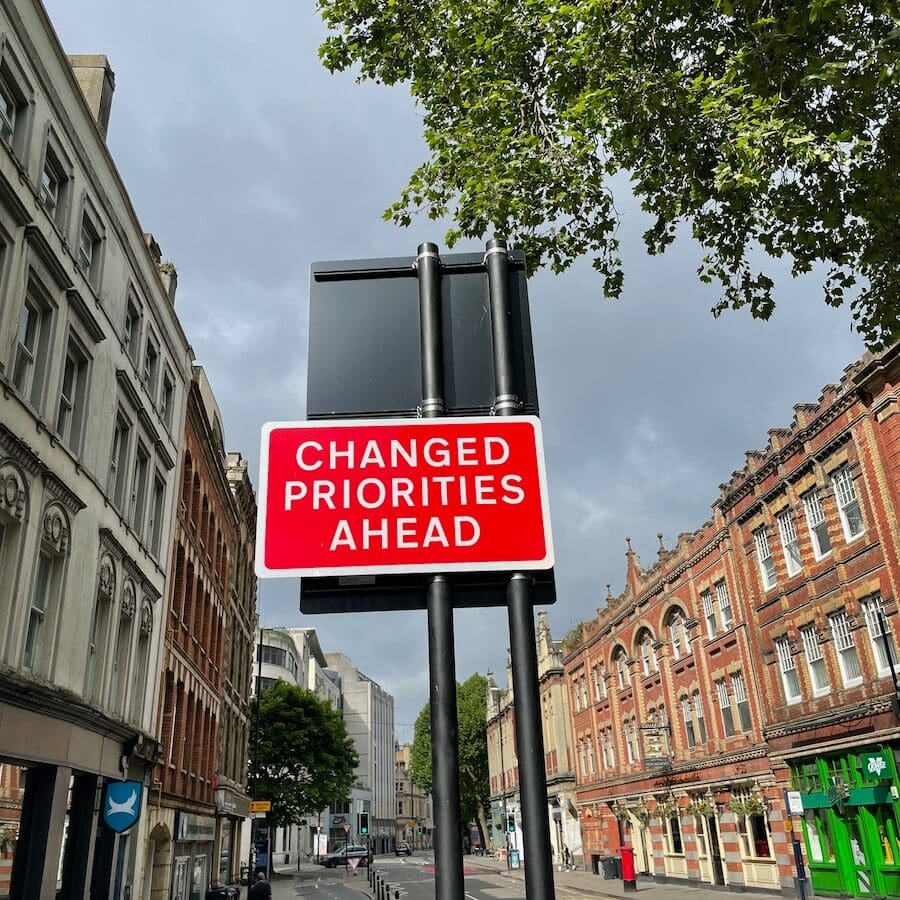In an era marked by rapid technological advancements, globalisation, and unprecedented levels of market volatility, the business landscape is anything but static. This dynamic environment poses a unique set of challenges and opportunities for organisations, particularly when it comes to project management. For decades, the “Iron Triangle” of scope, time, and cost has been the foundational model guiding project management practices. While effective in a more predictable business environment, this model is increasingly coming under scrutiny as organisations grapple with complex, fast-paced projects that demand a higher degree of flexibility and adaptability.
For executives, C-level leaders, and senior management, the limitations of the Iron Triangle are not merely academic discussions confined to project management offices. They have real-world implications that can affect the bottom line, market competitiveness, and long-term strategic goals. Understanding these limitations, as well as the advantages offered by Agile methodologies, is not just a tactical move—it’s a strategic imperative that can define the future trajectory of an organisation.
In this article, we will explore why the traditional Iron Triangle model is becoming obsolete and how Agile methodologies offer a more holistic, adaptive approach to project management. We will also discuss the broader organisational implications of adopting Agile, including strategic alignment, risk management, and the critical role of leadership in facilitating a successful Agile transformation.
The Myth of the Iron Triangle: A Re-examination for the Modern Executive
For years, the Iron Triangle has served as the cornerstone of conventional project management, offering a seemingly straightforward framework that links scope, time, and cost as interdependent variables. The Iron Triangle model suggests that if you change one variable—be it scope, time, or cost—the other two variables will be affected. This straightforward yet inflexible principle has been the guiding framework for numerous projects. However, while this model may have been effective in more predictable business settings, it is increasingly inadequate for managing the complexities and uncertainties that are inherent in today’s fast-paced projects.
In the context of an Agile environment, the Iron Triangle’s rigidity is not just a limitation; it’s a liability. Agile methodologies, rooted in principles of flexibility, adaptability, and responsiveness, challenge the traditional constraints imposed by the Iron Triangle. Unlike conventional project management, which often locks teams into predefined scopes and timelines, Agile allows for ongoing adjustments in response to real-time feedback and changing circumstances.
For executives, C-level leaders, and senior management, this necessitates a paradigm shift. The focus transitions from a command-and-control approach, where variables are tightly managed to meet predetermined objectives, to a more fluid, enabling leadership style. In this new paradigm, the role of the executive is not to control every variable but to create an environment where adaptability and innovation can thrive. This shift is not merely a change in project management methodology; it’s a transformation that has profound implications for organisational culture, strategic alignment, and competitive advantage.
Understanding and embracing this shift is crucial for executives who are responsible for steering their organisations through uncertain waters. The Agile approach offers not just a different way to manage projects but a different way to think about what project management can achieve. It aligns more closely with the realities of today’s business landscape, offering a more nuanced, adaptive approach that goes beyond the limitations of the Iron Triangle.
Strategic Alignment and Business Agility
In today’s volatile, uncertain, complex, and ambiguous (VUCA) business environment, the need for strategic alignment has never been more critical. Traditional project management methodologies often operate in silos, focusing solely on the completion of individual projects without necessarily considering their impact on broader business objectives. This approach, while perhaps effective in a more stable business landscape, is increasingly untenable in a world where market dynamics can shift dramatically in a short period.
Agile, by contrast, is not merely a set of practices for software development or project management; it’s a strategic framework that permeates the entire organisation. When implemented effectively, Agile methodologies facilitate a symbiotic relationship between individual projects and overarching business goals. This is achieved through iterative cycles and feedback loops, which allow for real-time adjustments to project objectives in line with evolving business strategies and market conditions.
For executives and senior leaders, the adoption of Agile methodologies extends beyond the remit of project management and becomes a strategic imperative. It necessitates a rethinking of how projects are initiated, planned, and executed, ensuring that they are intrinsically aligned with the organisation’s strategic objectives. This alignment is not a one-off exercise but a continuous process that requires ongoing engagement from the C-suite to frontline teams.
Moreover, Agile’s emphasis on adaptability and responsiveness makes it particularly well-suited for navigating the complexities of today’s global business environment. It enables organisations to pivot quickly in response to market changes, customer feedback, and emerging opportunities or threats. This level of business agility is not just a competitive advantage; in many industries, it’s a prerequisite for survival.
In summary, the adoption of Agile methodologies represents a fundamental shift in both operational tactics and strategic thinking. It offers a more dynamic, responsive approach to project management, which in turn facilitates greater alignment with business objectives. For executives committed to steering their organisations through the complexities of the modern business landscape, understanding and implementing Agile is not just beneficial—it’s essential.
Risk Management in an Agile World
In conventional project management paradigms, risk is often perceived as an external factor to be controlled or mitigated. Changes in scope, timelines, or resources are typically seen as disruptions that could potentially derail a project. This risk-averse approach, while prudent in a more stable business environment, can be a hindrance in today’s complex and fast-paced world where change is not just inevitable but often desirable.
Agile methodologies offer a fundamentally different perspective on risk management, reframing it from a reactive function to a proactive, integral component of business strategy. In an Agile environment, risk is not merely something to be minimised; it’s a variable to be optimised. Uncertainties and changes are not just challenges to overcome but opportunities to learn, adapt, and improve. This shift in perspective transforms risk management from a defensive tactic into a strategic asset.
For executives and senior leaders, this means rethinking how risk is conceptualised and managed within the organisation. Rather than isolating risk management as a separate function or department, Agile integrates it into the very fabric of project planning and execution. Through iterative cycles, continuous feedback, and adaptive planning, Agile methodologies enable organisations to respond to risks in real time, turning potential setbacks into strategic advantages.
This integrated approach to risk management has several key benefits for the C-suite. Firstly, it aligns risk management with business objectives, ensuring that risks are not just mitigated but leveraged for strategic advantage. Secondly, it fosters a culture of resilience and adaptability, equipping the organisation to better navigate the uncertainties and complexities of the modern business landscape. Lastly, it facilitates more informed decision-making, as real-time data and feedback loops provide executives with the insights needed to make strategic adjustments promptly.
In essence, Agile methodologies offer a more nuanced, dynamic approach to risk management, one that aligns closely with the realities of today’s volatile business environment. For executives tasked with steering their organisations through uncertain waters, adopting an Agile approach to risk management is not just a tactical choice but a strategic imperative.
The Role of Leadership in Agile Transformation
The journey towards Agile transformation is not merely a procedural adjustment; it’s a profound organisational metamorphosis that demands robust and visionary leadership. The role of executives, C-level leaders, and senior management in this transformation is pivotal, extending far beyond the mere endorsement of new methodologies. It involves orchestrating a cultural shift that permeates every level of the organisation, from strategic planning down to operational execution.
In a traditional project management setting, leadership often takes a directive, top-down approach, where goals are set, plans are made, and teams are expected to execute these plans with minimal deviation. In contrast, leadership within an Agile framework is more facilitative and empowering. The executive’s role transitions from that of a commander to that of an enabler, focused on creating an organisational culture that values adaptability, innovation, and continuous improvement.
This shift in leadership style has several key implications for executives. Firstly, it necessitates a re-evaluation of how success is measured and rewarded within the organisation. Traditional performance metrics may need to be supplemented or even replaced by indicators that better reflect Agile values, such as speed of adaptation, customer satisfaction, or the quality of collaborative efforts.
Secondly, it requires an investment in people and skills. Agile transformation is not just about implementing new processes; it’s about equipping teams with the skills, tools, and mindset they need to operate effectively in a more adaptive environment. This may involve targeted training programs, mentorship initiatives, or even a reconfiguration of team structures to better facilitate cross-functional collaboration.
Thirdly, it calls for a more dynamic approach to strategy and decision-making. In an Agile organisation, strategy is not a static document but a dynamic roadmap, subject to ongoing refinement and adaptation. Executives must be prepared to adjust strategic objectives in real-time, in response to feedback and changing circumstances, without losing sight of long-term organisational goals.
Lastly, the role of leadership in an Agile transformation extends to external stakeholder management. Executives must be adept at communicating the benefits and implications of Agile methodologies to shareholders, customers, and other stakeholders, aligning external expectations with internal changes.
In summary, the transition to Agile is a complex, multifaceted endeavour that requires strong, adaptive leadership. For executives and senior leaders, this involves not just a change in tools and processes but a fundamental rethinking of their role in shaping organisational culture, strategy, and long-term success. It’s a challenging yet rewarding journey, one that has the potential to redefine not just how projects are managed but how organisations are led.
Conclusion: The Agile Paradigm as a Business Imperative for the Modern Executive
The limitations of the Iron Triangle are becoming increasingly apparent in today’s complex and volatile business environment. For executives and senior leaders, understanding and adopting Agile methodologies is no longer optional—it’s a necessity for maintaining a competitive edge. By embracing Agile, organisations can achieve not just better project outcomes, but more importantly, superior business outcomes that align with strategic objectives.
In a world where change is the only constant, the traditional project management frameworks are proving to be increasingly inadequate. The Iron Triangle, once considered the bedrock of project management, is now seen as a limiting factor that hampers adaptability and responsiveness. Agile methodologies offer a way out of this conundrum, providing a more flexible, adaptive approach that is better suited to the complexities of modern business.
For the C-suite, the shift to Agile is not merely a tactical adjustment but a strategic transformation that impacts every facet of the organisation—from project management to risk mitigation, from operational efficiency to customer satisfaction. It requires a comprehensive rethinking of how projects are initiated, managed, and delivered, ensuring that they are intrinsically aligned with the organisation’s long-term goals and strategies.
Moreover, Agile’s emphasis on adaptability, continuous improvement, and stakeholder engagement makes it a powerful tool for navigating the uncertainties and complexities of today’s global business landscape. It enables organisations to be more resilient, more responsive, and more aligned with the evolving needs of their customers, stakeholders, and the market at large.
In conclusion, the adoption of Agile methodologies is not just an operational necessity; it’s a strategic imperative. It offers a transformative approach to project management, one that enables organisations to be more agile, more aligned, and more adaptable in the face of ever-changing market dynamics. For executives committed to long-term organisational success, understanding and implementing Agile is not just beneficial—it’s essential.






0 Comments